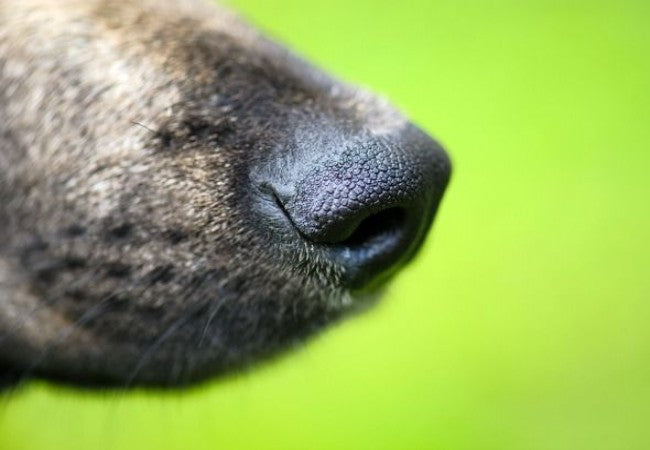Nasal Dermatoses in Dogs – Vet‑Led Guide 2025 🐶👃🩺

In this article
Nasal Dermatoses in Dogs – Vet‑Led Guide 2025 🐶👃🩺
By Dr. Duncan Houston BVSc
Hello, I’m Dr Duncan Houston, BVSc, founder of Ask A Vet. This 2025 guide dives into nasal planum dermatoses—skin disorders affecting your dog’s nose. They range from harmless dry cracks to serious autoimmune or cancerous lesions. Let’s walk through the causes, diagnosis, treatment options, and prevention strategies to keep your pup's nose healthy and happy. 🐾
📘 What Are Nasal Dermatoses?
The nasal planum is the hairless, textured skin at the tip of a dog’s nose, made of thick epidermis and distinct rete ridges. Dermatoses here can include:
Scale, crusting (e.g., solar dermatitis, zinc-responsive) Depigmentation (vitiligo, discoid lupus), Erosions & ulcerations (infections, autoimmune, neoplasia), Masses (SCC, lymphoma). These may be metabolic, immune-mediated, infectious, allergic, keratinization disorders, or neoplastic in origin.
🚩 Common Causes & Risk Factors
- Infectious: Mucocutaneous pyoderma (bacteria), dermatophytosis.
- Immune-mediated / autoimmune: Discoid lupus erythematosus (DLE), pemphigus foliaceus/erythematosus, uveodermatologic syndrome.
- Metabolic/nutritional: Zinc-responsive dermatosis.
- Keratinization issues: Nasal hyperkeratosis, hereditary parakeratosis.
- Nasal solar dermatitis: sun-triggered inflammation (“collie nose”).
- Neoplastic: Squamous cell carcinoma, cutaneous T-cell lymphoma.
🌡️ Which Dogs Are Affected?
Conditions can affect any dog, but certain breeds are more predisposed:
• DLE in Collies, Shepherds, Huskies
• Zinc-responsive in Huskies, Malamutes
• SCC in light-nosed breeds (e.g., Scottish Terriers)
• Hereditary parakeratosis in Labradors.
🚨 Recognizing Clinical Signs
- Scale/crust: thick, dry, even ulceration in solar dermatitis or hyperkeratosis.
- Redness, erosions, oozing: mucocutaneous pyoderma or autoimmune diseases.
- Loss of pigment: DLE loses the cobblestone texture; vitiligo keeps the texture.
- Pustules/crust: pemphigus complex, histiocytosis.
- Depigmented ulcerated patches: uveodermatologic syndrome.
- Focal masses/ulcers: neoplasia like SCC or lymphoma.
🔍 How Is It Diagnosed?
A stepwise diagnostic approach includes:
- Clinical history & exam: breed, sun exposure, systemic signs.
- Cytology & cultures: skin scrapings, bacterial/fungal cultures for infections.
- Biopsy & histopathology: gold standard to confirm autoimmune, neoplastic, or keratinization conditions.
- Immunological testing: immunohistochemistry for lymphoma, pemphigus.
- Sun-exposure evaluation: consistent with solar dermatitis or DLE lesions.
💊 Treatment Strategies
1. Infectious Dermatoses
- Topical/systemic antibiotics (pyoderma) or antifungals (ringworm)
- Maintain hygiene and resolve secondary infections.
2. Immune-Mediated & Autoimmune
- DLE: topical tacrolimus, tetracycline + niacinamide; sun shields.
- Pemphigus: systemic glucocorticoids ± azathioprine; topical for mild cases.
- Uveodermatologic: aggressive immunosuppression (steroids + azathioprine).
3. Metabolic & Keratinization Disorders
- Zinc-responsive: zinc supplementation, dietary correction, and resolving secondaries.
- Hyperkeratosis/parakeratosis: topical keratolytics, moisturizers, sunscreens.
4. Nasal Solar Dermatitis (“Collie Nose”)
- Topical steroids or tacrolimus, strict sun avoidance, and sunscreen.
5. Neoplastic Conditions
- SCC: surgical excision ± radiation/cryotherapy.
- Lymphoma: biopsy, staging, chemo (lomustine, prednisolone).
🏡 At‑Home Care & Prevention
- Monitor and clean nasal lesions daily.
- Apply pet-safe sunscreen and avoid midday sun.
- Use moisturizing balms or keratolytics as directed.
- Follow medication regimens and veterinary rechecks.
- Protect the nose from trauma and allergens.
🐾 Ask A Vet
Concerned about your dog’s nose? Reach a licensed vet anytime via Ask A Vet. Find gentle nose balms, sun shields,
✨ Key Takeaways
- Nasal dermatoses are varied—infectious, immune, metabolic, keratinization, or neoplastic.
- Accurate diagnosis—cytology, culture, and biopsy—is key to effective treatment.
- Topical treatments and immunotherapy can manage autoimmune and solar-related nose issues.
- Zinc supplementation and nutrition heal metabolic conditions.
- Sunscreen and balms protect against hyperkeratosis and sun damage.
- Neoplasia requires surgical and oncologic intervention.
- Regular care and awareness help catch issues early—your vet or Ask A Vet is just a call away. 🐾❤️
If your dog’s nose develops persistent crusts, pigment changes, bleeding, or sores, don’t wait. Contact your veterinarian or Ask A Vet. Early diagnosis and treatment lead to healthier, happier noses—and better lives. 🩺






